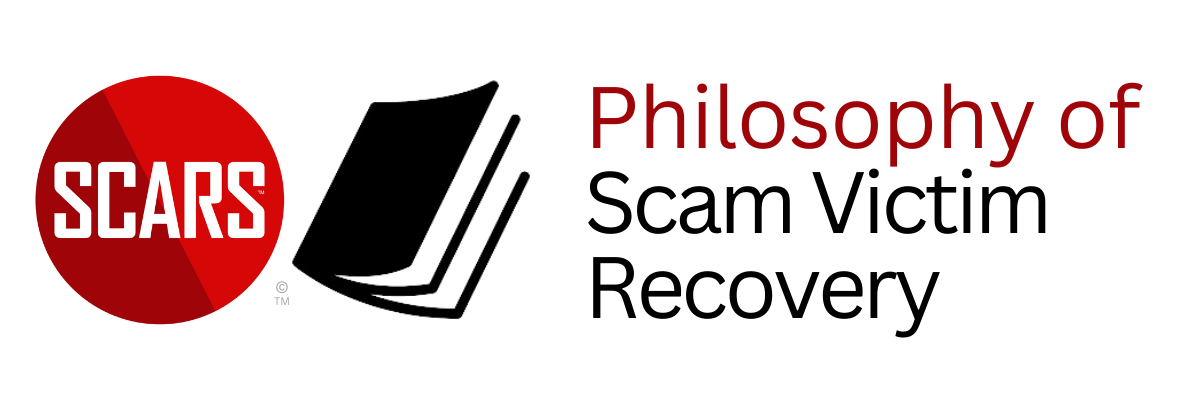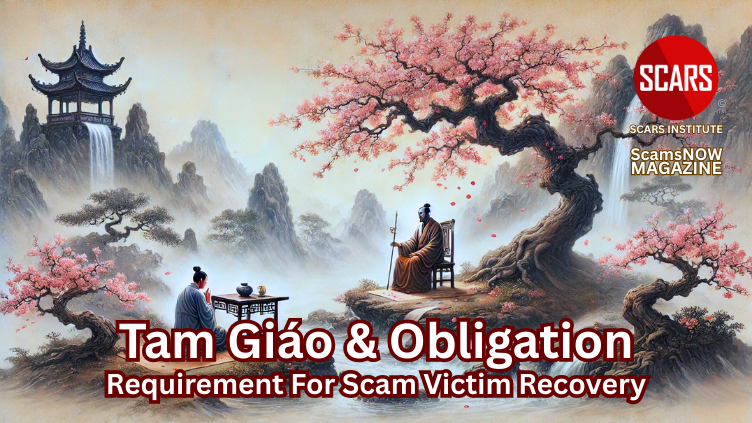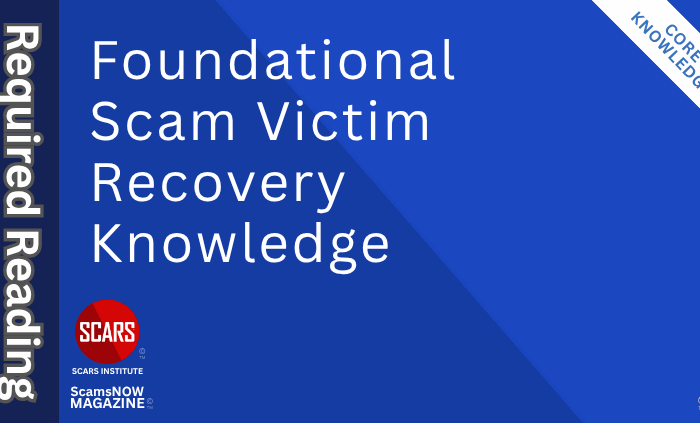Japanese Geidō: Helping Scam Victims to Master Their Life and Art
A Philosophy to Help Scam Victims to Recover and for Advocates to Learn to Care for Scam Victims
Primary Category: Scam Victim Recovery Philosophy
Author:
• Tim McGuinness, Ph.D., DFin, MCPO, MAnth – Anthropologist, Scientist, Polymath, Director of the Society of Citizens Against Relationship Scams Inc.
About This Article
Geidō, the Japanese philosophy of disciplined artistic mastery, offers a powerful framework for both scam victims and advocates in their recovery and support efforts. For victims, geidō provides a structured approach to healing through discipline, mindfulness, and continuous self-improvement, helping them regain confidence and rebuild trust in themselves.
By embracing repetition, patience, and self-expression, victims can transform their trauma into a journey of personal growth. For advocates, geidō reinforces the importance of lifelong learning, emotional resilience, and mindful engagement when supporting victims. By applying geidō’s principles, both victims and those who help them can develop strength, wisdom, and a deeper sense of purpose, ensuring that recovery and advocacy become paths of mastery rather than burdens of the past.

Japanese Geidō: A Philosophy to Help Scam Victims to Recover and for Advocates to Learn to Care for Scam Victims
The Mastery of Life and Art – Applying it to Scam Victim Recovery – It is All About the Process
What is Japanese Geidō?
Geidō is a Japanese concept that translates to the way of art or the path of artistic mastery. It refers to a disciplined approach to artistic and cultural pursuits that emphasizes lifelong dedication, continuous improvement, and spiritual or philosophical depth. Rooted in traditional Japanese aesthetics and ethics, geidō is not just about technical skill but also about cultivating a refined spirit, discipline, and a deeper connection to the art form.
Historically, geidō developed from the broader philosophical traditions of dō (the way), which are influenced by Buddhism, Confucianism, and Shintoism. Similar to other Japanese dō practices such as kendō (the way of the sword) or chadō (the way of tea), geidō emphasizes the integration of technical excellence, personal discipline, and ethical conduct.
Core Principles of Geidō
Geidō is based on several key principles that guide practitioners in their artistic journey. These principles create a structured yet deeply personal approach to mastering an art form.
Discipline and Lifelong Dedication
One of the defining characteristics of geidō is the idea that mastery requires lifelong dedication. Artists, musicians, and performers train under a strict regimen, often under the guidance of a master (sensei), refining their skills over decades. The emphasis is on perseverance and commitment rather than quick success.
Spiritual and Philosophical Depth
Beyond technical proficiency, geidō integrates a spiritual or philosophical component. Many Japanese traditional arts, such as Noh theater, calligraphy (shodō), or flower arranging (ikebana), are not just performances or crafts but also meditative practices that foster inner peace, mindfulness, and a deeper connection to the art itself.
Form and Tradition (Kata)
A fundamental part of geidō is the importance of kata—structured forms or patterns of movement and technique that must be mastered before an artist can innovate. Whether in the precise movements of kabuki actors or the controlled brushstrokes of a calligrapher, adhering to established forms is a crucial part of learning.
Humility and Continuous Learning
True mastery in geidō means recognizing that there is always more to learn. Even the most accomplished artists continue refining their craft, never considering themselves complete. This humility is deeply ingrained in Japanese artistic traditions, where even masters remain students of their discipline.
Examples of Geidō in Traditional Japanese Arts
Several traditional Japanese arts embody the philosophy of geidō, each with its own structured training process and deep cultural significance.
Chadō (The Way of Tea)
The Japanese tea ceremony, or chadō, is one of the most well-known forms of geidō. It involves not only the preparation of tea but also the refinement of movement, etiquette, and aesthetic appreciation. Every step in the ceremony is performed with precision and mindfulness, reflecting the principle that everyday actions can be elevated to an art form.
Shodō (The Way of Calligraphy)
Japanese calligraphy, or shodō, is another practice deeply rooted in geidō. It requires disciplined control of the brush, an understanding of balance and flow, and an appreciation for the meaning of the characters being written. Each stroke is deliberate, and the process emphasizes both technical skill and personal expression.
Noh and Kabuki Theater
Traditional Japanese theater, including Noh and kabuki, follows strict forms and training that exemplify geidō. Actors spend years perfecting their movements, vocal techniques, and expressions. The performances are not only entertainment but also a display of refined technique and cultural heritage.
Ikebana (The Way of Flowers)
The Japanese art of flower arranging, ikebana, is a meditative and highly structured practice. Practitioners learn how to balance elements, create harmony, and express deep aesthetic and philosophical concepts through their arrangements. Simplicity and asymmetry play a significant role, demonstrating the Japanese principle of wabi-sabi—finding beauty in imperfection.
Geidō in Modern Times
While geidō has its roots in traditional Japanese arts, its principles can be applied to modern disciplines as well. Contemporary artists, musicians, and even professionals in fields like design or martial arts continue to embrace the idea of disciplined mastery. In an era where rapid success is often glorified, geidō serves as a reminder that true excellence is achieved through patience, dedication, and respect for tradition.
Embracing Geidō in Daily Life
You do not have to be a traditional artist to incorporate geidō into your life. The mindset of disciplined practice, mindfulness, and continuous improvement can be applied to any craft or profession. Whether you are a writer, musician, chef, or athlete, the principles of geidō encourage you to approach your work with dedication, respect for the process, and a desire for lifelong learning.
By adopting the spirit of geidō, you cultivate a sense of purpose in your craft and a deeper appreciation for the journey of mastery. Rather than focusing solely on outcomes, you learn to find fulfillment in the process, understanding that every step taken with intention and care contributes to both personal and artistic growth.
Applying Geidō to Scam Victim Recovery
Geidō, the Japanese concept of the way of art, is a disciplined and structured approach to mastering an art form while developing inner growth. Rooted in dedication, repetition, and refinement, geidō is not just about acquiring technical skill but about cultivating character, patience, and self-awareness through a lifelong commitment to a meaningful practice. For scam victims, adopting the principles of geidō can provide a structured and purposeful way to navigate recovery, helping them regain confidence, rebuild trust in themselves, and find strength through personal growth.
Discipline and Structure as a Path to Healing
One of the biggest challenges scam victims face is the emotional turmoil that follows deception and betrayal. Feelings of shame, self-blame, and doubt can create instability, making it difficult to move forward. Geidō emphasizes discipline and structured learning, which can be applied to the recovery process. By committing to a structured path of healing—whether through therapy, journaling, or engaging in creative pursuits—scam victims can create a stable framework for progress. Having a defined practice, such as daily reflection or scheduled self-care activities, can bring a sense of control and purpose.
Mastery Through Repetition and Patience
In geidō, repetition is key to mastery. Artists, calligraphers, martial artists, and performers engage in the same practice daily, refining their craft over time. This concept can help scam victims understand that recovery is not a single event but a process that unfolds gradually. Emotional resilience is built through consistent efforts—practicing self-forgiveness, challenging negative thoughts, and engaging in healthy behaviors even when progress feels slow. Just as an artist perfects a brushstroke after thousands of attempts, scam victims can refine their emotional resilience through repeated self-affirmation and intentional healing efforts.
Mindfulness and Full Engagement
A core aspect of geidō is zanshin, or full awareness and presence in the moment. Whether in the tea ceremony, ikebana (flower arranging), or martial arts, practitioners are fully engaged in each action, appreciating the depth and nuance of their craft. Scam victims often struggle with intrusive thoughts and fears about the past or future. Applying geidō means bringing full attention to the present moment, engaging deeply in self-care, and being mindful of their emotions without judgment. Mindfulness techniques such as meditation, slow and intentional movement, or creative arts can help victims regain a sense of stability and presence.
Turning Pain Into Artistic or Personal Expression
Many forms of geidō involve expressing deep emotions through art, music, calligraphy, or performance. Scam victims often struggle with expressing their pain in a way that feels productive. Channeling emotions into a creative or disciplined practice—whether writing, painting, martial arts, or another art form—can provide an outlet for processing complex feelings. The act of creation transforms suffering into something meaningful, reinforcing a sense of personal agency.
Cultivating Resilience and Continuous Improvement
In geidō, there is no final mastery—only continuous refinement. Each challenge is an opportunity to grow stronger. Scam victims can apply this mindset to their recovery by viewing setbacks not as failures but as part of the process of becoming more resilient. They can approach their healing as an evolving practice, knowing that each day presents a new opportunity to refine their strength, wisdom, and self-trust.
Adopting a Lifelong Philosophy of Growth
Geidō is not just about excelling in an art form—it is about shaping one’s character over a lifetime. For scam victims, this perspective can be empowering. Instead of seeing recovery as a finite goal, they can view it as a lifelong journey of self-awareness, wisdom, and emotional strength. By embracing the principles of geidō, scam victims can transform their experience into a path of self-discovery, using structured discipline, mindfulness, and continuous growth to build a future defined not by their past victimization but by their personal strength and resilience.
SCARS Institute’s 10-Step Guide to Applying Geidō to Any Process from Recovery to Learning
Applying geidō—the Japanese way of art—to any process involves discipline, intentionality, and continuous refinement. Whether you are learning a new skill, working on personal development, or recovering from a difficult experience, the principles of geidō can guide you toward mastery and self-improvement. Below is a structured step-by-step approach to integrating geidō into any process.
Step 1: Establish a Clear Purpose
Before beginning your journey, define your purpose. Geidō is not just about acquiring skills; it is about cultivating discipline, character, and deep engagement in your practice. Ask yourself:
-
-
- What is my goal?
- Why is this process important to me?
- How do I want to grow through this experience?
-
Having a clear purpose ensures that your practice is intentional and meaningful rather than just a mechanical repetition of actions.
Step 2: Seek a Source of Knowledge
In traditional geidō, students learn under the guidance of a master (sensei) to develop their craft. In modern applications, this means finding a trusted source of knowledge—whether it is a mentor, a structured course, books, or self-study.
-
-
- Identify experts or teachers who can guide your learning (such as Dr. McGuinness or Lic. Gonzalez from SCARS.)
- Observe the best practices in your chosen field.
- Absorb knowledge with humility, understanding that mastery takes time (often thousands of hours.)
-
Step 3: Develop a Structured Practice
Geidō emphasizes discipline through structured, repetitive practice. To apply this to your process, create a consistent routine that allows you to develop mastery over time.
-
-
- Set aside dedicated time each day or week for practice.
- Follow a structured method rather than practicing randomly.
- Focus on foundational skills before attempting advanced techniques.
-
Repetition strengthens your abilities and builds confidence in your practice.
Step 4: Commit to Continuous Improvement
One of the core principles of geidō is kaizen (continuous improvement). You should always be refining, adjusting, and improving your process rather than settling for complacency.
-
-
- Regularly assess your progress.
- Identify areas for refinement without self-judgment.
- Embrace mistakes as opportunities for growth.
-
The path of geidō is never-ending. Even masters continue learning and improving.
Step 5: Practice Mindful Engagement (Zanshin)
Zanshin, or full presence and awareness, is essential in geidō. Applying this principle means fully engaging in your practice with mindfulness rather than rushing through it.
-
-
- Slow down and focus on each action with intention.
- Remove distractions to create a space of deep concentration.
- Appreciate the nuances of your practice instead of just completing tasks.
-
By immersing yourself fully in the process, you cultivate a deeper connection to your work and refine your skills at a higher level.
Step 6: Follow Established Forms Before Innovating
In traditional Japanese arts, students first master kata (forms) before creating their unique expressions. Applying this principle means learning the fundamentals before attempting innovation.
-
-
- Study and internalize traditional methods before making changes.
- Respect foundational techniques, understand their importance.
- Once proficient, allow yourself to explore creative or personalized adaptations.
-
Mastery comes from discipline, and true creativity is rooted in deep understanding.
Step 7: Cultivate Patience and Resilience
Geidō teaches that mastery takes years of dedicated practice. This requires patience and resilience, especially when progress feels slow.
-
-
- Accept that true growth happens gradually.
- Persevere through challenges without becoming discouraged.
- Trust the process rather than focusing only on immediate results.
-
The discipline of geidō is about long-term commitment rather than quick success.
Step 8: Maintain Humility and a Student Mindset
A core tenet of geidō is the belief that there is always more to learn. No matter how advanced you become, remain open to learning.
-
-
- Approach each practice session with curiosity rather than arrogance.
- Seek feedback from others to continue refining your skills.
- Remind yourself that mastery is a lifelong journey, not a destination.
-
By staying humble, you allow yourself to keep evolving and improving.
Step 9: Reflect and Internalize Lessons
Beyond skill development, geidō is also about self-reflection. Regularly take time to reflect on what you have learned and how the process is shaping you.
-
-
- Keep a journal of insights, challenges, and breakthroughs.
- Ask yourself how the practice is influencing your mindset and character.
- Recognize personal growth beyond just technical improvement.
-
The process of geidō is not just about mastery in an external craft but about cultivating inner discipline and wisdom.
Step 10: Apply the Principles Beyond the Practice
The true essence of geidō is that it extends beyond the specific art or skill you are working on—it shapes how you approach life.
-
-
- Apply patience, discipline, and mindfulness to daily challenges.
- Integrate structured practice into personal growth efforts.
- Emphasize continuous learning in all aspects of your life.
-
By living according to the principles of geidō, you cultivate a mindset of excellence, purpose, and lifelong growth, regardless of the field you choose.
Geidō is more than just a method for mastering a craft—it is a philosophy that teaches discipline, mindfulness, and continuous self-improvement. Whether you are recovering from hardship, learning a new skill, or refining your expertise, following the structured approach of geidō helps you remain focused, resilient, and engaged. By committing to this path with patience and dedication, you transform both your practice and your personal growth, finding fulfillment not just in the outcome but in the journey itself.
The Geidō Master
A Geidō master is typically referred to as a “Shihan” (師範) or “Sensei” (先生) depending on the specific art form they practice.
Shihan (師範) is a term used for highly respected and accomplished masters in traditional Japanese disciplines, including martial arts and artistic practices. It signifies someone who has attained a high level of mastery and is qualified to teach others at an advanced level.
Sensei (先生) is a more general term meaning teacher or instructor. It is commonly used in Japanese culture for educators, mentors, and experts in various fields, including geidō.
In some geidō traditions, a master might also be referred to by specific titles depending on the discipline. For example:
In Noh theater, a master performer may be called Tate-kata or Shite-kata (leading actor).
In Shodō (Japanese calligraphy), a distinguished master may be addressed as Hōgen (法眼) or Hōin (法印), historically titles given to eminent calligraphers.
In Chadō (tea ceremony), a master tea practitioner is often called a “Tea Master” or Iemoto (家元), which refers to the head of a school or lineage.
Each traditional art within geidō has its own system of ranking and recognition for mastery, but the general terms Shihan and Sensei are widely used across disciplines.
Applying Geidō to Scam Victim Advocates and Those Helping Crime Victims
Geidō, the way of art, is a philosophy rooted in disciplined practice, lifelong learning, and self-mastery. While traditionally applied to artistic and cultural pursuits, the principles of geidō can be a powerful guide for scam victim advocates and those dedicated to supporting crime victims. Helping others recover from trauma requires patience, emotional resilience, and continuous refinement of one’s skills and approach. By adopting the disciplined and mindful approach of geidō, advocates can enhance their ability to support victims effectively while maintaining their own emotional well-being.
Establishing a Purpose-Driven Path
In geidō, every practice begins with a clear purpose. As an advocate for scam victims, defining your mission is essential. Ask yourself:
-
-
- Why do I want to help scam victims?
- What values will guide my advocacy work?
- How can I refine my skills and knowledge to provide the best support?
-
Having a strong sense of purpose ensures that your work is intentional and sustainable. Advocacy is not just about responding to immediate needs but about building long-term solutions that empower victims.
Seeking Knowledge and Continuous Learning
In traditional geidō, practitioners learn under a master or study established techniques before developing their own style. Advocates should take a similar approach by continuously educating themselves about scams, fraud recovery, victim psychology, and the legal aspects of fraud prevention.
-
-
- Stay informed about the latest scam tactics and psychological manipulation techniques.
- Learn from experienced advocates, psychologists, and legal professionals.
- Seek training in trauma-informed care to provide effective support.
-
By committing to lifelong learning, you ensure that your advocacy remains relevant and impactful.
Developing a Structured Practice
Geidō emphasizes discipline and routine. Advocates can apply this principle by establishing structured methods for supporting victims, responding to cases, and engaging in public awareness efforts.
-
-
- Create a system for how you handle victim outreach and support.
- Develop educational materials or workshops that provide structured guidance.
- Maintain consistency in your advocacy efforts, ensuring victims receive reliable and compassionate assistance.
-
By having a structured approach, you prevent burnout and improve the quality of your support.
Mastery Through Repetition and Reflection
True mastery in geidō comes from continuous practice and refinement. Advocates must develop their skills through repeated experience, learning from each case, and adapting to better serve victims.
-
-
- Regularly assess how you communicate with victims and refine your approach.
- Reflect on past cases to identify areas for improvement.
- Accept that supporting victims is a lifelong learning process rather than a static skill set.
-
Each interaction is an opportunity to improve, ensuring that your advocacy efforts grow stronger over time.
Practicing Mindful Engagement
A key aspect of geidō is zanshin, or full presence in the moment. Advocates must practice deep listening and mindful engagement when supporting victims, ensuring they provide thoughtful and compassionate assistance.
-
-
- Give victims your full attention without distraction.
- Listen deeply, allowing them to express emotions without interruption.
- Respond with empathy and patience, rather than rushing to provide solutions.
-
Being fully present helps victims feel heard, validated, and understood.
Balancing Tradition and Innovation
In geidō, practitioners master traditional forms before innovating. Advocacy should be built on proven methods while also adapting to new challenges.
-
-
- Study historical cases of fraud recovery and victim support strategies.
- Use established best practices while also exploring new approaches to outreach and education.
- Adapt your advocacy to modern scam tactics, integrating technology and social media awareness campaigns.
-
This balance ensures that you remain rooted in experience while evolving with new challenges.
Cultivating Patience and Emotional Resilience
Helping victims of scams and crime can be emotionally draining. Geidō teaches patience and emotional control, which are essential for advocates to avoid burnout and maintain effectiveness.
-
-
- Develop personal self-care rituals to maintain emotional balance.
- Accept that recovery is a long process and that victims may struggle with setbacks.
- Learn to separate your emotions from your advocacy work to maintain professional effectiveness.
-
By cultivating resilience, you ensure that you can continue your work without becoming overwhelmed.
Humility and a Lifelong Commitment to Growth
Geidō emphasizes humility—no matter how skilled a practitioner becomes, they always remain a student. Advocates should adopt the same mindset, understanding that there is always more to learn.
-
-
- Seek feedback from victims and fellow advocates to refine your approach.
- Acknowledge that every case is different and requires ongoing adaptation.
- Remain open to new perspectives, even from those you are helping.
-
By embracing humility, you create an environment of mutual learning and respect.
Applying Geidō Beyond Individual Advocacy
True mastery in geidō extends beyond personal practice to contributing to a greater cause. Advocates should aim to strengthen the overall fraud prevention and victim support ecosystem.
-
-
- Collaborate with organizations (such as the SCARS Institute,) legal experts, and law enforcement to create broader impact.
- Mentor new advocates, passing on knowledge and guiding them in their own advocacy path.
- Engage in public education, helping prevent scams before they happen.
-
By thinking beyond individual cases, you contribute to systemic change that benefits all victims.
Applying geidō to scam victim advocacy transforms the process into a disciplined, intentional, and deeply meaningful practice. By embracing structure, continuous learning, mindfulness, and emotional resilience, advocates can provide the best possible support while maintaining their own well-being. The path of geidō teaches that mastery is never complete—there is always more to refine, more to learn, and more ways to improve. By adopting this philosophy, you ensure that your advocacy remains strong, effective, and impactful for years to come.
Conclusion
Geidō is more than just a philosophy of artistic mastery—it is a structured approach to personal development, resilience, and lifelong learning. For scam victims, embracing geidō can transform the recovery process from a painful aftermath into a meaningful journey of self-discovery, healing, and empowerment. By applying principles such as discipline, repetition, mindfulness, and continuous improvement, victims can reclaim control over their emotions, rebuild self-trust, and develop a strong foundation for personal growth.
For advocates and those supporting crime victims, geidō provides a framework for maintaining emotional resilience, deepening expertise, and refining the way they provide care. Advocacy, like any disciplined pursuit, requires patience, humility, and a commitment to learning. By integrating geidō into their work, advocates can strengthen their ability to guide victims toward recovery while ensuring their own well-being remains intact.
Whether applied to personal recovery, professional advocacy, or any other area of life, geidō teaches that mastery is not about reaching a final destination but about continuously refining one’s skills, understanding, and emotional strength. By adopting this mindset, scam victims and those who support them can build a future defined not by past harm but by the mastery of resilience, wisdom, and personal empowerment.
Please Rate This Article
Please Leave Us Your Comment Below
Also, tell us of any topics we might have missed.
-/ 30 /-
What do you think about this?
Please share your thoughts in a comment above!
-/ 30 /-
What do you think about this?
Please share your thoughts in a comment above!
ARTICLE RATING
TABLE OF CONTENTS
- A Philosophy to Help Scam Victims to Recover and for Advocates to Learn to Care for Scam Victims
- Japanese Geidō: A Philosophy to Help Scam Victims to Recover and for Advocates to Learn to Care for Scam Victims
- What is Japanese Geidō?
- Applying Geidō to Scam Victim Recovery
- SCARS Institute’s 10-Step Guide to Applying Geidō to Any Process from Recovery to Learning
- The Geidō Master
- Applying Geidō to Scam Victim Advocates and Those Helping Crime Victims
- Conclusion
CATEGORIES
U.S. & Canada Suicide Lifeline 988
![NavyLogo@4x-81[1] Japanese Geidō: Helping Scam Victims to Master Their Life and Art - 2025](https://scamsnow.com/wp-content/uploads/2025/04/NavyLogo@4x-811.png)
ARTICLE META
One Comment
Leave A Comment
Important Information for New Scam Victims
- Please visit www.ScamVictimsSupport.org – a SCARS Website for New Scam Victims & Sextortion Victims.
- SCARS Institute now offers its free, safe, and private Scam Survivor’s Support Community at www.SCARScommunity.org – this is not on a social media platform, it is our own safe & secure platform created by the SCARS Institute especially for scam victims & survivors.
- SCARS Institute now offers a free recovery learning program at www.SCARSeducation.org.
- Please visit www.ScamPsychology.org – to more fully understand the psychological concepts involved in scams and scam victim recovery.
If you are looking for local trauma counselors, please visit counseling.AgainstScams.org
If you need to speak with someone now, you can dial 988 or find phone numbers for crisis hotlines all around the world here: www.opencounseling.com/suicide-hotlines
Statement About Victim Blaming
Some of our articles discuss various aspects of victims. This is both about better understanding victims (the science of victimology) and their behaviors and psychology. This helps us to educate victims/survivors about why these crimes happened and not to blame themselves, better develop recovery programs, and help victims avoid scams in the future. At times, this may sound like blaming the victim, but it does not blame scam victims; we are simply explaining the hows and whys of the experience victims have.
These articles, about the Psychology of Scams or Victim Psychology – meaning that all humans have psychological or cognitive characteristics in common that can either be exploited or work against us – help us all to understand the unique challenges victims face before, during, and after scams, fraud, or cybercrimes. These sometimes talk about some of the vulnerabilities the scammers exploit. Victims rarely have control of them or are even aware of them, until something like a scam happens, and then they can learn how their mind works and how to overcome these mechanisms.
Articles like these help victims and others understand these processes and how to help prevent them from being exploited again or to help them recover more easily by understanding their post-scam behaviors. Learn more about the Psychology of Scams at www.ScamPsychology.org
SCARS INSTITUTE RESOURCES:
If You Have Been Victimized By A Scam Or Cybercrime
♦ If you are a victim of scams, go to www.ScamVictimsSupport.org for real knowledge and help
♦ SCARS Institute now offers its free, safe, and private Scam Survivor’s Support Community at www.SCARScommunity.org – this is not on a social media platform, it is our own safe & secure platform created by the SCARS Institute especially for scam victims & survivors.
♦ Enroll in SCARS Scam Survivor’s School now at www.SCARSeducation.org
♦ To report criminals, visit https://reporting.AgainstScams.org – we will NEVER give your data to money recovery companies like some do!
♦ Follow us and find our podcasts, webinars, and helpful videos on YouTube: https://www.youtube.com/@RomancescamsNowcom
♦ Learn about the Psychology of Scams at www.ScamPsychology.org
♦ Dig deeper into the reality of scams, fraud, and cybercrime at www.ScamsNOW.com and www.RomanceScamsNOW.com
♦ Scam Survivor’s Stories: www.ScamSurvivorStories.org
♦ For Scam Victim Advocates visit www.ScamVictimsAdvocates.org
♦ See more scammer photos on www.ScammerPhotos.com
You can also find the SCARS Institute’s knowledge and information on Facebook, Instagram, X, LinkedIn, and TruthSocial
Psychology Disclaimer:
All articles about psychology and the human brain on this website are for information & education only
The information provided in this and other SCARS articles are intended for educational and self-help purposes only and should not be construed as a substitute for professional therapy or counseling.
Note about Mindfulness: Mindfulness practices have the potential to create psychological distress for some individuals. Please consult a mental health professional or experienced meditation instructor for guidance should you encounter difficulties.
While any self-help techniques outlined herein may be beneficial for scam victims seeking to recover from their experience and move towards recovery, it is important to consult with a qualified mental health professional before initiating any course of action. Each individual’s experience and needs are unique, and what works for one person may not be suitable for another.
Additionally, any approach may not be appropriate for individuals with certain pre-existing mental health conditions or trauma histories. It is advisable to seek guidance from a licensed therapist or counselor who can provide personalized support, guidance, and treatment tailored to your specific needs.
If you are experiencing significant distress or emotional difficulties related to a scam or other traumatic event, please consult your doctor or mental health provider for appropriate care and support.
Also read our SCARS Institute Statement about Professional Care for Scam Victims – click here
If you are in crisis, feeling desperate, or in despair, please call 988 or your local crisis hotline.
More ScamsNOW.com Articles
A Question of Trust
At the SCARS Institute, we invite you to do your own research on the topics we speak about and publish. Our team investigates the subject being discussed, especially when it comes to understanding the scam victims-survivors’ experience. You can do Google searches, but in many cases, you will have to wade through scientific papers and studies. However, remember that biases and perspectives matter and influence the outcome. Regardless, we encourage you to explore these topics as thoroughly as you can for your own awareness.
























![scars-institute[1] Japanese Geidō: Helping Scam Victims to Master Their Life and Art - 2025](https://scamsnow.com/wp-content/uploads/2025/04/scars-institute1.png)
![niprc1.png1_-150×1501-1[1] Japanese Geidō: Helping Scam Victims to Master Their Life and Art - 2025](https://scamsnow.com/wp-content/uploads/2025/04/niprc1.png1_-150x1501-11.webp)

Thank you.
I also found that art is one of the best relaxation methods and stimulators for many years.